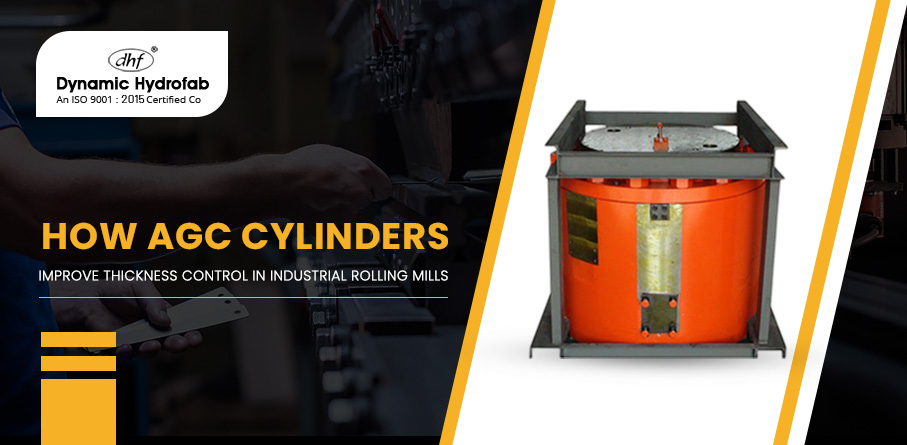- 195-B, Libaspur Road Samaypur, Delhi-110042

Automatic Gauge Control (AGC) cylinders are a type of hydraulic cylinder used in rolling mills that are used in factories. These cylinders help a lot in rolling metal sheets or strips to a very precise thickness. These are necessary to make sure the material stays in the same thickness. It must meet strict quality standards. The cylinders can automatically change the roll gap to make sure the finished product has the right gauge (thickness). It is the space between the rolls. It is based on the information they get from the sensors.
Rolling mills can't do without Automatic Gauge Control Cylinders. This is because they make it possible to accurately control the thickness of metal strips. Using the data from thickness sensors, the roll gap is precisely controlled. It comes to reach this aim. This is the space between the rolling cylinders. This dynamic adjustment helps to make up for differences in the material's properties.
The AGC cylinders are a very important part of the AGC system. It is a system for controlling feedback. Its purpose is to keep the thickness of rolled metal the same.
The roll gap needs to be changed. The space between the top and lower wheels of the rolling mill. This change needs to be implemented right now. It is to take into account changes in the incoming material or other things. It could change the final thickness.
As the material leaves the rolling machine, sensors keep track of how thick it is. Then, the data is put into a control system. It figures out what improvements need to be made to the roll gap. Then the screws set the space between the rolls. The AGC cylinders control them to get the right thickness.
Gives a more complete explanation:
Automatic gauge control systems use thickness gauges like X-ray or beta gauges to constantly measure the thickness of the strip. It comes out of the rolling machine.
Sending the measured thickness back to the AGC system creates a feedback loop. Then it compares it to the thickness that was meant to be there.
The roll gap is controlled by the hydraulic cylinders. When it sees a difference, it will obtain signals from the AGC system.
Change the Roll Gap
You may change the roll gap, or the space between the rollers, with the hydraulic cylinders. This changes the amount of pressure that is delivered to the metal strip.
The AGC system makes sure that the rolled strip is the right thickness. It has very little variance because it keeps an eye on and changes the roll gap all the time. This lets you be more precise about how thick the strip is.
The AGC cylinders are what really fine-tune the rolling process. They make sure that the strip's thickness stays within the exact limits. It arrives no matter what the rolling circumstances or material quality are.
Dynamic Hydrofab Products with uniform strip thickness are of superior quality and have fewer flaws. As a result, the quality of the product gets better.
Because the thickness can be controlled precisely, less off-gauge material is utilised. It makes less trash and scrap.
AGC systems can make production more efficient overall. This is possible by cutting down on waste and downtime during production.
It gets more reliable and easier to plan for. When the rolling process can handle disruptions. People say this method is more stable.
Dynamic Hydrofab AGC cylinders are quite important for modern rolling mills. They can regulate the thickness of the strip. It makes things more effective and reduces on waste. It helps to progress the quality of the products.
Also Read:- How AGC Cylinders Enhance Quality Control in Steel Rolling
Also Read:- How AGC Cylinders Contribute to Energy Efficiency in Hydraulic Systems
Leave a Comments